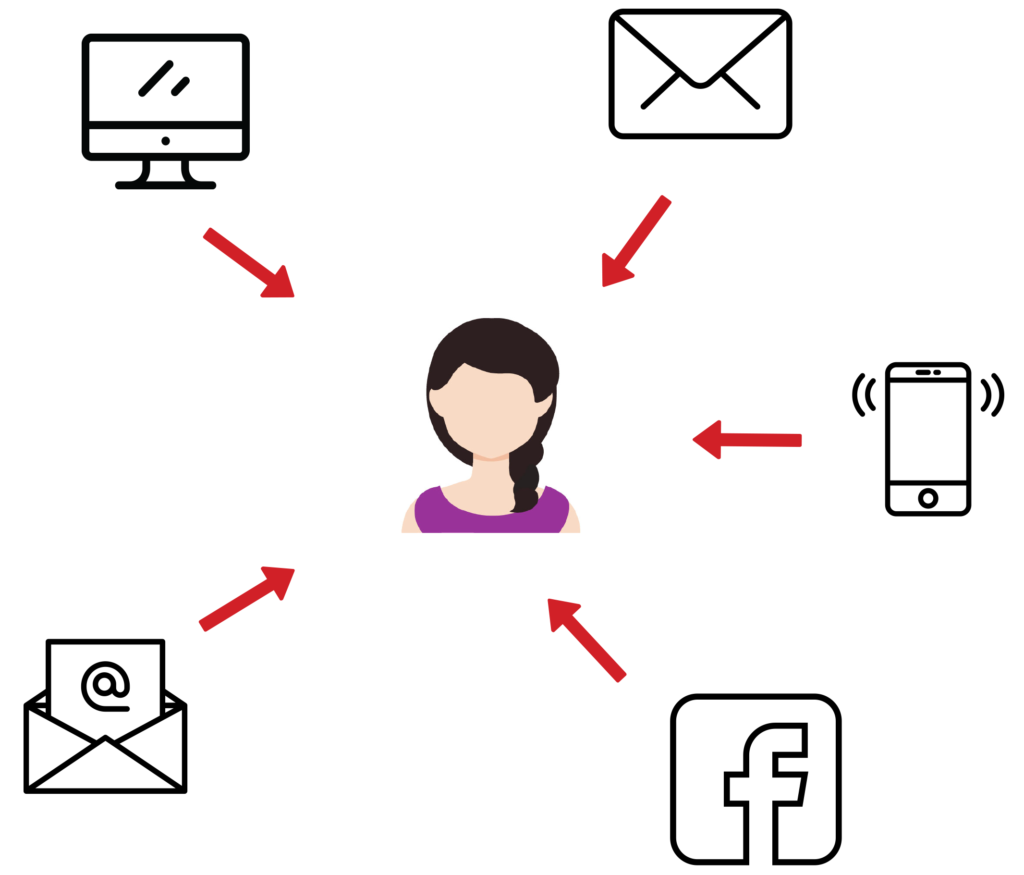Cross-channel marketing refers to the practice of using multiple channels, both online and offline, to communicate and engage with customers. It recognizes that consumers interact with brands through various touchpoints, such as websites, social media, physical stores, events, and more. By adopting a cross-channel approach, businesses can deliver consistent messaging and experiences across these different channels, creating a seamless customer journey.
The Importance of Integrating Online and Offline Strategies

Integrating online and offline strategies is crucial in today’s interconnected world. While online marketing has gained significant prominence, traditional offline channels still hold value in reaching certain segments of the target audience. By combining both approaches, businesses can maximize their reach and impact, ensuring that they are present at every stage of the customer’s buying journey.
Building a Unified Brand Experience
One of the key benefits of cross-channel marketing is the ability to create a unified brand experience. When a customer interacts with a brand across multiple channels, they should experience a consistent message, look, and feel. This consistency fosters brand loyalty and trust, as customers recognize and resonate with the brand’s identity, regardless of the channel they engage with.
Leveraging Online Channels
- Website Optimization: A well-optimized website is the foundation of a successful cross-channel marketing strategy. Ensure that your website is user-friendly, responsive, and easily navigable. Implement effective SEO techniques to improve your website’s visibility in search engine results, driving organic traffic and attracting potential customers.
- Search Engine Optimization (SEO): SEO plays a vital role in improving your brand’s online visibility. Conduct keyword research and optimize your website’s content, meta tags, and URLs to rank higher in search engine results. By appearing on the first page of search results, you increase the chances of attracting qualified leads and driving conversions.
- Pay-Per-Click (PPC) Advertising: PPC advertising allows you to display targeted ads to your potential customers across various online platforms. Set up strategic PPC campaigns that align with your cross-channel marketing goals. By carefully selecting keywords, demographics, and interests, you can ensure that your ads reach the right audience and drive relevant traffic to your website.
- Social Media Marketing: Social media platforms offer a vast opportunity to engage with your target audience. Create compelling content and share it across different social media channels. Encourage user-generated content and interact with your followers to build a strong online community. Leverage social media analytics to gain insights into your audience’s preferences and tailor your marketing efforts accordingly.
Harnessing the Power of Offline Channels
- Traditional Advertising: Traditional advertising methods, such as television, radio, and print media, still have a significant impact. Develop creative and memorable advertisements that resonate with your target audience. Consider using unique QR codes or specific URLs in offline campaigns to track their effectiveness and bridge the gap between online and offline interactions.
- Direct Mail Marketing: Direct mail marketing allows you to deliver targeted messages directly to your customers’ mailboxes. Create personalized and visually appealing mailers that capture attention and drive recipients to take action. Integrate QR codes or custom URLs in your direct mail to redirect recipients to specific landing pages or online promotions.
- Events and Trade Shows: Participating in events and trade shows provides an excellent opportunity to engage with customers face-to-face. Create a memorable booth or exhibit that aligns with your brand’s identity. Collect customer information and follow up after the event, integrating the offline interaction into your online marketing efforts.
Creating Consistent Messaging Across Channels

To ensure a seamless cross-channel experience, it is crucial to maintain consistent messaging across all channels. Develop a comprehensive brand guideline that outlines the tone, voice, and key messages to be conveyed. Train your marketing team to adhere to these guidelines, ensuring that every touchpoint reflects your brand’s values and objectives.
Measuring and Analyzing Cross-Channel Campaigns
To evaluate the effectiveness of your cross-channel marketing efforts, it is essential to measure and analyze key metrics. Utilize analytics tools to track the performance of your campaigns across different channels. Monitor website traffic, engagement rates, conversion rates, and customer feedback to gain insights into what is working and where improvements can be made.
Overcoming Challenges in Cross-Channel Marketing
Implementing a successful cross-channel marketing strategy comes with its challenges. Some common hurdles include coordinating messaging across channels, integrating data from various sources, and adapting to the rapidly changing digital landscape. By investing in robust marketing technology and staying updated with industry trends, businesses can overcome these challenges and thrive in the cross-channel ecosystem.
Conclusion
Cross-channel marketing offers a powerful way to integrate online and offline strategies, maximizing a brand’s reach and impact. By creating a unified brand experience, leveraging online and offline channels, and maintaining consistent messaging, businesses can effectively engage with their target audience at every touchpoint. Embrace the opportunities presented by cross-channel marketing and tailor your strategies to create a seamless and memorable customer journey.
Read more about Guerilla Marketing here.
